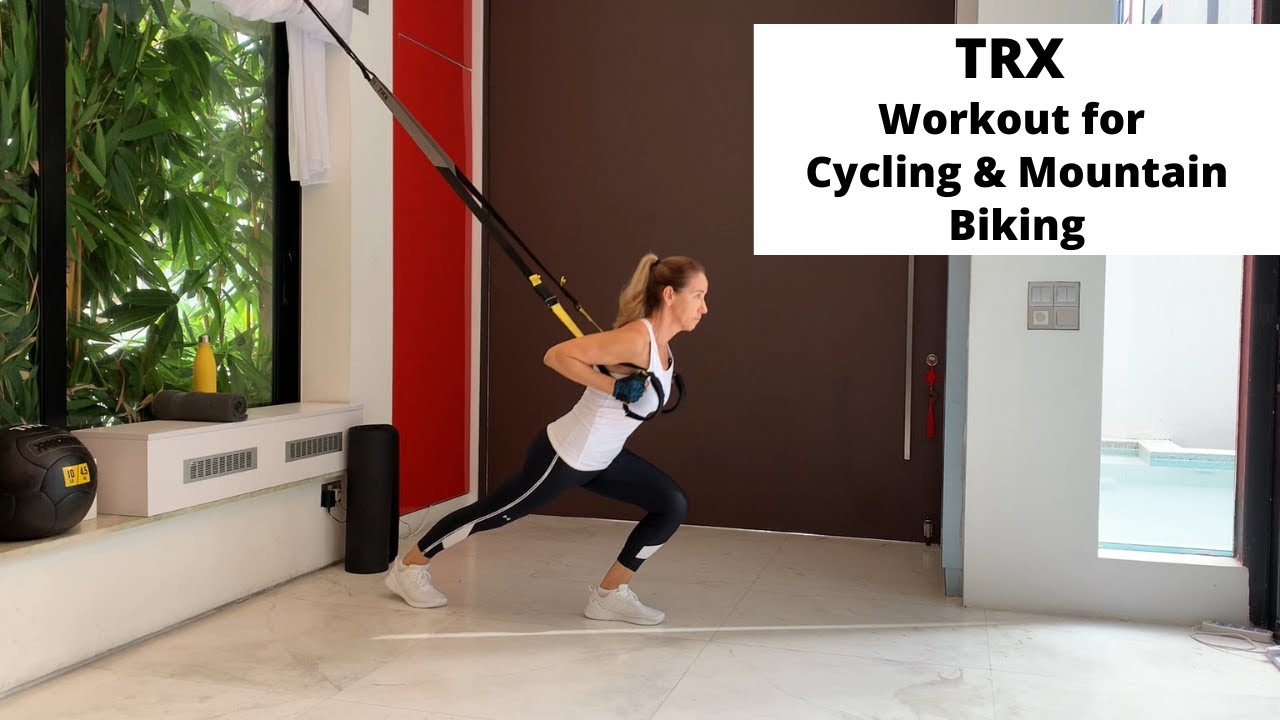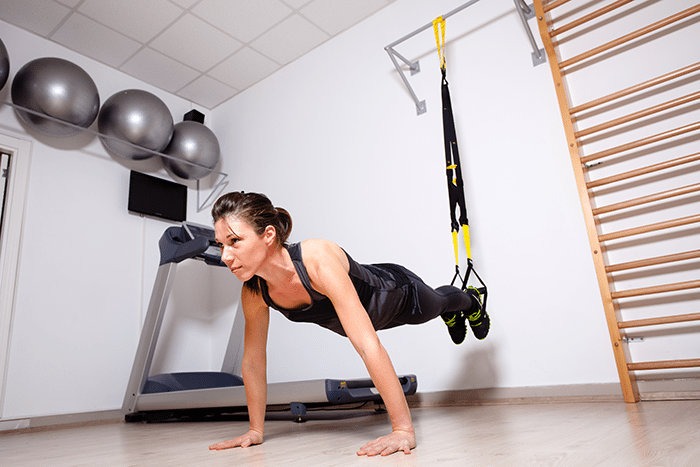We're going to share a secret with you: the fastest way to getting better on your bike is through strength training, not just riding your bike more. The trick is to do the right kind of strength training that will build "trail strength," not just some random "gym strength." If you base your program on increasing body awareness and strength-to-weight ratio, you'll see a marked increase in your ability to muscle up climbs, bomb through rock gardens and basically dominate the trail.
Since body weight exercises are the cornerstone for any program of this type, the TRX Suspension Trainer becomes an invaluable asset. By allowing you to increase the number of exercise options and providing a way to increase the difficulty of those exercises, you have a tool that will allow you to increase trail strength like few others. In the video, James Wilson, owner of MTB Strength Training Systems and strength coach for the Yeti/Fox Racing Shox World Cup Team, shows you three TRX exercises he likes to use with his athletes specifically for their ability to replicate the unique demands of mountain biking.
TRX Balance Lunge: By allowing you to turn a lunge into a true unilateral exercise, you are able to work on your standing pedal stroke. When you stand up, you have to stack the core and drive with the hips of the lead leg while minimizing how much you are using the rear leg for balance, which pretty much describes this exercise. "I like to pull the free leg up so that the thigh is parallel with the ground at the top position," says James, "which mimics the pedal stroke even more by adding in the drive-pull action of the legs."
TRX Lateral Fallout: Cornering comes down to lateral hip mobility and stability. The better you can slide your hips over, the better you can lean your bike and counterbalance the lean, which is the essence of ripping corners. The TRX Lateral Fallout is one of the best exercises to work on this movement in the gym. Make sure you are really paying attention to the hips driving the movement. Says James, "If your ego gets in the way and you come down too far, you won't see the transfer to the trail.
TRX Single Leg Jumps: By using the TRX as a slight assist on your TRX Single Leg Jumps, you allow for more control and you work on the upper body coordination that goes into jumping on your bike. Allowing for a bit more control lets you think more about driving the movement from your hips instead of your quads and lower back ("think butt back on the way down and squeeze your glute on the way up," says James). By timing the extension of your arms on the landing and pulling them in on the way up, you work on the timing needed to pop into a jump instead of pulling up and leaning back.
While you may need to progress into some of these exercises, the message remains the same: you can improve your riding skills through proper strength training. The foundation for this is an understanding of the movements behind the skills and how you can improve and strengthen those movements during your workouts. By allowing for unique exercises and progressions, the TRX is a must-have tool for any mountain biker who is serious about riding faster and with more confidence on the trail.
James Wilson is the owner of MTB Strength Training Systems, the world's only company dedicated to developing strength and conditioning programs for the unique demands of mountain biking. James owns a training facility in Grand Junction, Colorado and is the strength coach for the Yeti/Fox Racing Shox World Cup Team. Visit his website www.bikejames.com to sign up for the free No Gym, No Problem Bodyweight Workout.


